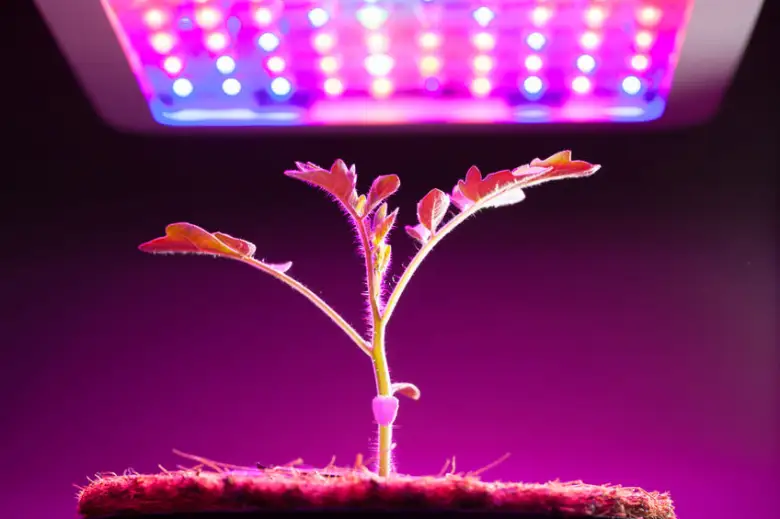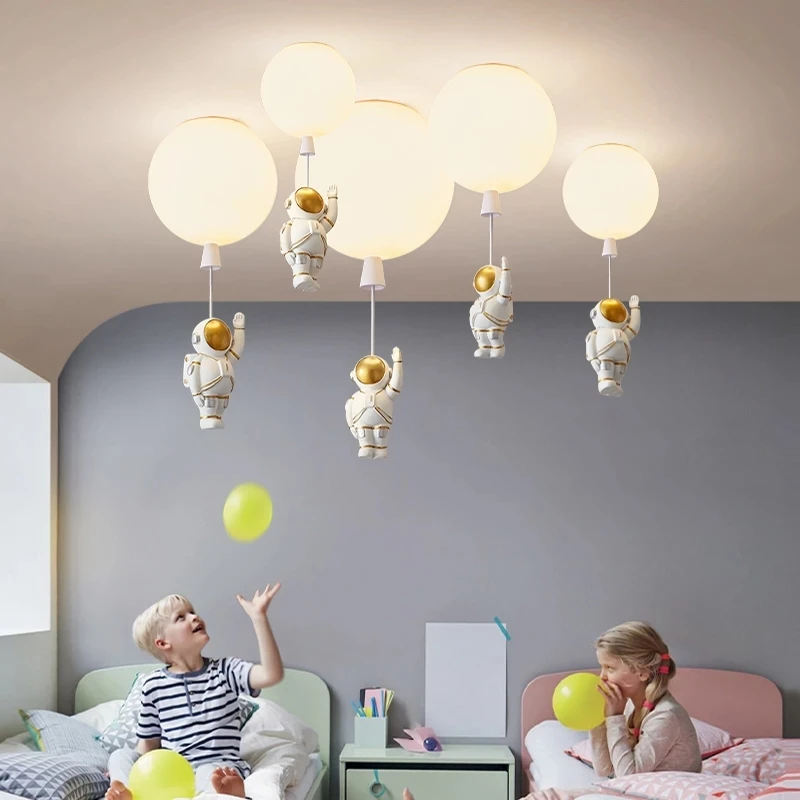COB (Chip on Board) LED grow lights represent a significant advancement in horticultural lighting technology. Unlike traditional lighting solutions, which often rely on multiple individual LEDs, COB technology integrates many small LED chips into a single module.
This compact design allows for a more efficient and powerful light source, perfectly suited for indoor gardening and commercial growing environments.
LED technology itself has revolutionized numerous industries due to its energy efficiency, longevity, and versatility. COB LED grow lights take these advantages a step further by offering a higher light intensity and uniformity.
The chip-on-board design facilitates better thermal management and a more focused light output, which is crucial for the optimal growth of plants.
The primary distinction between COB LED grow lights and traditional LED grow lights is the concentration of light. Traditional LEDs tend to scatter light across a broader area, whereas COB LEDs produce a more concentrated beam.
This results in better canopy penetration, ensuring that even the lower parts of the plants receive adequate light. Consequently, COB LED grow lights have gained popularity among indoor gardeners and commercial growers looking for efficient and effective lighting solutions.
What makes COB LED grow lights particularly appealing is their ability to mimic natural sunlight more closely than other lighting options.
This feature is critical for the photosynthesis process, which is essential for plant growth. Furthermore, the improved thermal efficiency of COB LEDs reduces the risk of overheating, thus providing a safer environment for plants and reducing the need for additional cooling systems.
As we delve deeper into the specifics of COB LED grow lights, we will explore their numerous advantages, proper usage, and best practices. Understanding these aspects will help both amateur and professional growers make informed decisions, ensuring optimal plant health and yield.
Advantages of COB LED Grow Lights
COB LED grow lights offer numerous advantages over other types of grow lights, making them a popular choice among indoor horticulturists.
One of the primary benefits is their energy efficiency. COB LEDs consume significantly less power compared to traditional lighting systems such as HPS (high-pressure sodium) lights and traditional LEDs.
This leads to considerable savings on electricity bills, a crucial factor for both hobbyists and commercial growers.
Another key advantage is the superior light intensity that COB LED grow lights provide. The technology behind COB (Chip on Board) allows for multiple LED chips to be placed closely together, resulting in a higher light output from a single source.
This concentrated light output ensures that plants receive more lumens per watt, promoting better growth and higher yields.
Spectrum quality is yet another area where COB LED grow lights excel. These lights are designed to emit a full spectrum of light, closely mimicking natural sunlight.
This feature is particularly beneficial for the photosynthesis process, aiding in robust plant growth from seedling to harvest. The full spectrum also supports the plants’ various stages of development, from vegetative growth to flowering, making COB LEDs a versatile option for all phases of plant cultivation.
Heat dissipation is another significant advantage of COB LED grow lights. Unlike HPS lights, which generate a considerable amount of heat, COB LEDs are designed with efficient heat sinks and cooling systems.
This minimizes the risk of heat stress on plants and reduces the need for additional cooling equipment, thus lowering overall operational costs.
Longevity is a notable benefit of COB LED grow lights. These lights have a longer lifespan compared to traditional grow lights, often lasting up to 50,000 hours.
This durability translates to fewer replacements and lower maintenance costs over time, making COB LEDs a cost-effective investment for long-term indoor gardening.
When compared to other grow light technologies, COB LED grow lights stand out for their energy efficiency, high light intensity, superior spectrum quality, excellent heat dissipation, and impressive longevity.
These attributes collectively make COB LEDs a superior choice for anyone looking to optimize their indoor growing environment.
How COB LED Grow Lights Work
COB (Chip-on-Board) LED grow lights are an advanced lighting solution that has gained popularity in horticulture due to their efficiency and effectiveness. The core of COB LED technology lies in its unique structure, where multiple LED chips are mounted closely together on a single substrate.
This design allows for a higher intensity of light and a more uniform distribution compared to traditional LED systems.
The assembly process begins with the mounting of the chips directly onto the circuit board, which minimizes the space between each chip and enhances heat dissipation.
This close arrangement enables COB LEDs to produce a high lumen output from a compact area, making them particularly suited for indoor gardening where space and light uniformity are critical.
Powering COB LED grow lights involves a carefully designed driver that regulates the voltage and current supplied to the LEDs. This driver ensures that the lights operate efficiently while providing a stable light output.
Additionally, these systems often incorporate advanced cooling mechanisms, such as heatsinks and fans, to manage the thermal load. Effective cooling is crucial as it prolongs the lifespan of the LEDs and maintains consistent light performance.
One of the standout features of COB LED grow lights is their emission spectrum. These lights can be engineered to emit specific wavelengths of light that cater to various stages of plant growth. For instance, blue wavelengths (400-500 nm) are beneficial for vegetative growth, promoting strong root and stem development.
In contrast, red wavelengths (600-700 nm) are more effective during the flowering stage, enhancing bud formation and fruiting. Some COB LEDs even offer full-spectrum light, mimicking natural sunlight to support plants throughout their entire growth cycle.
To help readers better understand these concepts, diagrams or illustrations depicting the structure and functioning of COB LED grow lights can be incredibly useful. Visual aids can highlight how the chips are mounted, the arrangement of the cooling system, and the spectrum of light emitted, providing a comprehensive understanding of this innovative technology.
Selecting the Right COB LED Grow Light for Your Needs
Selecting the right COB LED grow light is crucial for optimizing plant growth and achieving desired yields. Several factors must be considered to ensure you make an informed decision.
Wattage: The wattage of a COB LED grow light indicates its power consumption and light output. Depending on the size of your grow space and the types of plants you are cultivating, you will need a light with sufficient wattage to provide adequate illumination.
For instance, small indoor gardens may only require a 200-watt light, whereas larger setups might need 1000 watts or more. It is important to match the wattage to the specific requirements of your plants to avoid under or overexposure.
Coverage Area: The coverage area refers to the space that a COB LED grow light can effectively illuminate. Manufacturers typically provide this information in product specifications. Ensure the coverage area of your chosen light aligns with the dimensions of your grow space. If your area is expansive, consider using multiple lights or a higher wattage model to achieve uniform coverage.
Light Spectrum: Different plants have varying light spectrum needs. Full-spectrum COB LED grow lights are versatile, providing a balanced range of wavelengths suitable for all growth stages, from seedling to flowering.
However, some plants may benefit from specific spectrums. For example, blue light promotes vegetative growth, while red light encourages flowering and fruiting. Evaluate the spectrum needs of your plants to select the most appropriate light.
Understanding Product Specifications: Reading product specifications and user reviews is essential. Pay attention to details such as PAR (Photosynthetically Active Radiation) values, which indicate the light’s effectiveness for photosynthesis.
High PAR values typically correlate with better plant growth. User reviews can offer insights into real-world performance and reliability.
Budget Considerations: While higher-end COB LED grow lights often come with advanced features and better durability, they can be expensive. Establish a budget that balances quality and affordability. Remember that investing in a reliable light can lead to better results and long-term savings.
By considering wattage, coverage area, light spectrum, and budget, and thoroughly reviewing product specifications and user feedback, you can select the ideal COB LED grow light tailored to your specific needs.

Setting Up Your COB LED Grow Light System
Setting up a COB LED grow light system for your indoor garden involves several critical steps to ensure optimal plant growth and light efficiency. First, positioning the lights correctly is paramount.
Typically, COB LED grow lights should be placed overhead and centered above your plants to provide uniform light distribution. Depending on the plant species and growth stage, the height of the lights should be adjusted.
For seedlings, place the lights 24-36 inches above the plants, while for mature plants, 18-24 inches is ideal to maximize light exposure.
Next, the angle of the COB LED grow lights should be optimized. Most COB LED grow lights come with adjustable brackets or hanging kits that allow you to modify the angle. Angling lights slightly inward can help cover a larger area, ensuring that the light penetrates the canopy and reaches lower leaves.
Setting up timers is another crucial aspect. Automated timers help simulate natural light cycles, which are crucial for plant photosynthesis and growth.
For most plants, a lighting schedule of 16-18 hours of light and 6-8 hours of darkness is recommended during the vegetative stage. During the flowering stage, reduce the light exposure to 12 hours to mimic natural seasonal changes.
Ensuring proper ventilation and cooling is essential to maintain an optimal growing environment. COB LED grow lights generate less heat compared to traditional lighting systems, but they still require adequate airflow to prevent heat buildup.
Position fans to circulate air and maintain a consistent temperature and humidity level. This not only helps in cooling but also strengthens plant stems and prevents mold and pests.
When setting up your COB LED grow light system, safety should never be overlooked. Ensure that all electrical connections are secure and kept away from water sources. Use surge protectors and waterproof outlets to safeguard your setup.
Common pitfalls to avoid include placing lights too close to plants, leading to light burn, and neglecting ventilation, which can result in overheating and poor plant health.
By following these guidelines, you can create an efficient and effective COB LED grow light system that supports robust plant growth and maximizes your indoor gardening success.
Best Practices for Using COB LED Grow Lights
To fully harness the potential of COB LED grow lights, it’s essential to follow best practices tailored to the unique needs of your plants. One critical factor is the light schedule, which should be adjusted according to the growth stage of the plant.
For instance, during the vegetative stage, plants generally benefit from 18 hours of light and 6 hours of darkness. As they transition to the flowering stage, reducing the light exposure to 12 hours can help stimulate blooming. These schedules help mimic natural seasonal changes, promoting healthy growth and development.
The distance between the COB LED grow lights and your plants is another crucial parameter. During the seedling stage, lights should be positioned about 24-30 inches away to avoid overwhelming the young plants.
As plants mature, the lights can be lowered gradually to around 18-24 inches, providing more intense light without causing heat stress or light burn. Regularly monitoring plant responses and making incremental adjustments can optimize light exposure and overall plant health.
Monitoring and adjusting light usage over time is vital. Use tools like light meters to measure the intensity of light reaching your plants’ canopy. This data can guide you in fine-tuning the positioning and timing of your COB LED grow lights.
Additionally, implementing timers and automated systems can help maintain consistent light cycles, reducing manual intervention and improving efficiency.
COB LED grow lights can be seamlessly integrated with various growing techniques such as hydroponics or soil-based systems. In hydroponic setups, where nutrient solutions are directly fed to plant roots, precise control over light and other environmental factors can lead to exceptional growth rates.
Similarly, in traditional soil-based systems, COB LEDs can enhance natural sunlight or provide a complete light source, ensuring robust plant development.
Practical tips from experienced growers can further elevate your cultivation practices. For instance, rotating plants to ensure even light distribution and regularly cleaning the LED fixtures to maintain their efficiency are small steps that can yield significant results.
By adhering to these best practices, you can maximize the benefits of COB LED grow lights, leading to healthier and more productive plants.
Common Issues and Troubleshooting Tips
While COB LED grow lights offer numerous benefits for indoor gardening, users may encounter some common issues that can affect performance and plant health. Understanding these problems and knowing how to troubleshoot them can help ensure the longevity and efficiency of your grow lights.
One of the most frequently reported issues is uneven light distribution. This can lead to certain plants receiving more light than others, resulting in stunted growth or even plant damage.
To address this, ensure that your COB LED grow lights are properly positioned at an even distance from the plants. Adjust the height and angle of the lights to achieve uniform coverage. Reflective materials such as Mylar or white paint on the walls can also help in dispersing light more evenly.
Overheating is another common concern, especially when COB LED grow lights are used in small or poorly ventilated spaces. Overheating can not only damage the lights themselves but also affect plant health. To prevent this, ensure adequate airflow around the grow lights by using fans or an exhaust system.
Regularly clean the heat sinks and ensure that the cooling system of the COB LED grow lights is functioning correctly. If you notice persistent overheating, it might be wise to add additional cooling devices or upgrade to lights with better thermal management.
Electrical problems can also arise, ranging from flickering lights to complete power failure. These issues can be caused by faulty wiring, incompatible power supplies, or old, worn-out components.
Start by checking all connections and ensuring that the power supply matches the specifications of your COB LED grow lights. Replace any damaged cables or connectors and consider using a surge protector to safeguard against voltage spikes.
If the problem persists, it is advisable to consult a qualified electrician or the manufacturer for further assistance.
By addressing these common issues and implementing the suggested troubleshooting tips, users can maximize the performance and lifespan of their COB LED grow lights. Regular maintenance and vigilance can go a long way in ensuring that your indoor garden thrives.
Future Trends in COB LED Grow Light Technology
The future of COB LED grow lights promises profound advancements that could revolutionize indoor gardening. As technology continues to evolve, several trends are emerging that will enhance the efficiency and effectiveness of these lighting systems.
One of the most anticipated developments is the improvement in energy efficiency. Current COB LED grow lights already offer significant energy savings compared to traditional lighting systems, but future iterations are expected to push the boundaries even further.
Innovations in semiconductor materials and heat dissipation techniques will likely reduce energy consumption while maintaining or even increasing light output.
Another exciting frontier is the enhancement of light quality. The spectrum of light emitted by COB LED grow lights is crucial for plant growth, and future models are expected to feature more customizable and precise spectral outputs.
This customization will allow growers to fine-tune the light spectrum to cater to the specific needs of different plant species and growth stages, optimizing photosynthesis and overall plant health.
Moreover, advancements in smart technology will likely integrate seamlessly with COB LED systems, enabling automated adjustments based on real-time data from sensors monitoring plant health and environmental conditions.
Emerging trends in indoor gardening, such as vertical farming and urban agriculture, are also driving innovation in COB LED grow lights. As space becomes a premium, especially in urban areas, the demand for compact, efficient, and high-yield lighting solutions is increasing.
COB LED grow lights are well-positioned to meet these needs, offering powerful illumination in a compact form factor. Future designs may incorporate modular and scalable configurations, making it easier to adapt lighting setups to various growing environments and scales.
Overall, the future of COB LED grow lights is incredibly promising. With ongoing advancements in energy efficiency, light quality, and smart integration, these systems are set to become indispensable tools for modern indoor gardeners.
The potential for innovation in this field is vast, ensuring that COB LED grow lights will continue to evolve and meet the ever-changing demands of both hobbyists and commercial growers alike.









